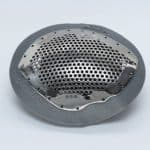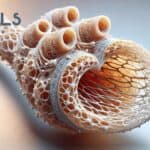
A New York native, Dr, Nima Massoomi is a Board Certified Oral and Maxillofacial Surgeon who attended the University of Pennsylvania where he received his Dental and Masters in Education. He then attended Medical school at Vanderbilt University where he also completed his Oral Surgery residency in 2007. This was followed by a Cosmetic surgery fellowship in 2008 at Ohio State alongside Dr. T. William Evans, fine-tuning his skills in the management of the soft-tissue and skin. He is currently a clinical instructor at the Department of Oral Surgery at the University of Pacific in San Francisco and maintains two practices in San Francisco and Cupertino. He has lectured nationally and internationally on the use technology in oral surgical procedures, with a goal of improving surgical outcomes using CBCT technology. Most recently, he was part of the team that brought to market the first FDA-approved robot “Yomi” for Dental Surgery in January 2017. This was after many years of collaboration with a team of scientists and engineers at Neocis in Miami, Fl. The Yomi robot will have the capabilities of performing a wide variety of oral surgical procedures, based on 3D CBCT data, being able to provide same-day surgery from start to finish. Dr. Nima Massoomi will be a speaker at the #3DHEALS2018 conference on April 20-21st, 2018.
Jenny: When was the first encounter you had with 3D printing? What was that experience like? What were you thinking at that moment?
Nima: Approximately 15 years ago, I became involved in 3D printing when I was in medical school as we prepared to remove a tumor from a patient’s lower jaw. We worked with a company called “Medical modeling” who 3D printed a model of the patient’s skull with the tumor anatomy and vital structures such as nerves, in order to plan our surgical approach. This allowed us to pre-bend the plates that would be required during the tumor resection surgery. This was only made possible creating a surgical template using CBCT imagery. Even back then I thought this was so cool and revolutionary, to preplan surgeries prior to even making an incision. Today, many companies are even pre-printing custom-made plates for these types of cases! 

Jenny: What inspired you to start your journey in 3D printing (bio-fabrication/bio-printing)?
Nima: Honestly, it was the ability to provide better and more precise care to my patients. It is my belief that if technology can be used to better patient outcomes, then it should be employed to its fullest extent.
Jenny: Who inspired you the most along this journey in 3D printing (bio-printing/bio-fabrication)? This can be a mentor, a patient, a celebrity, anyone basically. You can name more than one as well.
Nima: It really wasn’t a particular person, but I have to thank my the chairmen of my OMFS surgery department, Dr. Samual McKenna, and Dr. Scott Boyd, who was back then even willing and open to such ideas.
Jenny: What motivates you the most for your work?
Nima: Improving my patient’s lives and making them smile. This can range from the simplest form of dental injury which can include the loss of a front tooth, to the more devastating injuries from extensive facial trauma.
Jenny: What is/are the biggest obstacle(s) in your line of work? If you have conquered them, what were your solutions?
Nima: Data. I think all of us in the 3D printing field have to generate data to validate the use of this technology. I have been working closely with the faculty at University of Pacific Dental School to publish 2 papers on the accuracy of 3D printed material and how it affects outcomes. More papers are in the works.
Jenny: What do you think is (are) the biggest challenge(s) in 3D Printing/bio-printing? What do you think the potential solution(s) is (are)?
Nima: For the practitioners that are interested in using this technology, the expense of the equipment and the materials to start down this journey can be overwhelming. Additionally, it’s the lack of “cross-breeding” of ideas. For instance, I am currently working on solving a problem for an oral surgery procedure and need something printed in 3D printing using metal. However, I have no idea who has done this in the other fields and if they have, is it FDA approved to use in the surgical realm?
Jenny: If you are granted three wishes by a higher being, what would they be?
Nima: Make 3D printing universal, cheaper and faster.
Jenny: What advice would you give to a smart driven college student in the “real world”? What bad advice you heard should they ignore?
Nima: To make AI, 3D printing a part of their schooling.
Jenny: If you could have a giant billboard to promote a message to millions and even billions of people in our community (i.e. healthcare 3D printing and bio-fabrication), what message would that be?
Nima: “Got 3D? We do!”
Jenny: What were/was the best investment you made in 3D printing/bio-printing/bio-fabrication?
Nima: The treatment planning software that I use on a daily basis to create surgical guides/templates to perform surgery
Jenny: What were/was the worst investment you made in 3D printing/bio-printing/bio-fabrication?
Nima: I don’t think I have made one yet….time will tell?
Jenny: What was/is the biggest risk you took in your career?
Nima: Again, I think its too soon to answer that. Ask me in 10 years!
Jenny: What do you enjoy in your spare time? What are you passionate about outside of your work/3d printing?
Nima: Mission trips and volunteer work here in the US and internationally. Also trying newer adventures, such as robotics in the oral surgical procedure.
Jenny: What is your favorite quote? Why?
Nima: Mahatma Gandhi “live as if you were to die tomorrow, Learn as if you were to live forever.”
Jenny: What does the word “3DHEALS” mean to you? =)
Nima: 3D can heal.
Related Articles:
Interview: Mr. Shashi Jain, IoT Innovation Manager at Intel Corporation




 Feb 20, 2018
Feb 20, 2018 






Comments